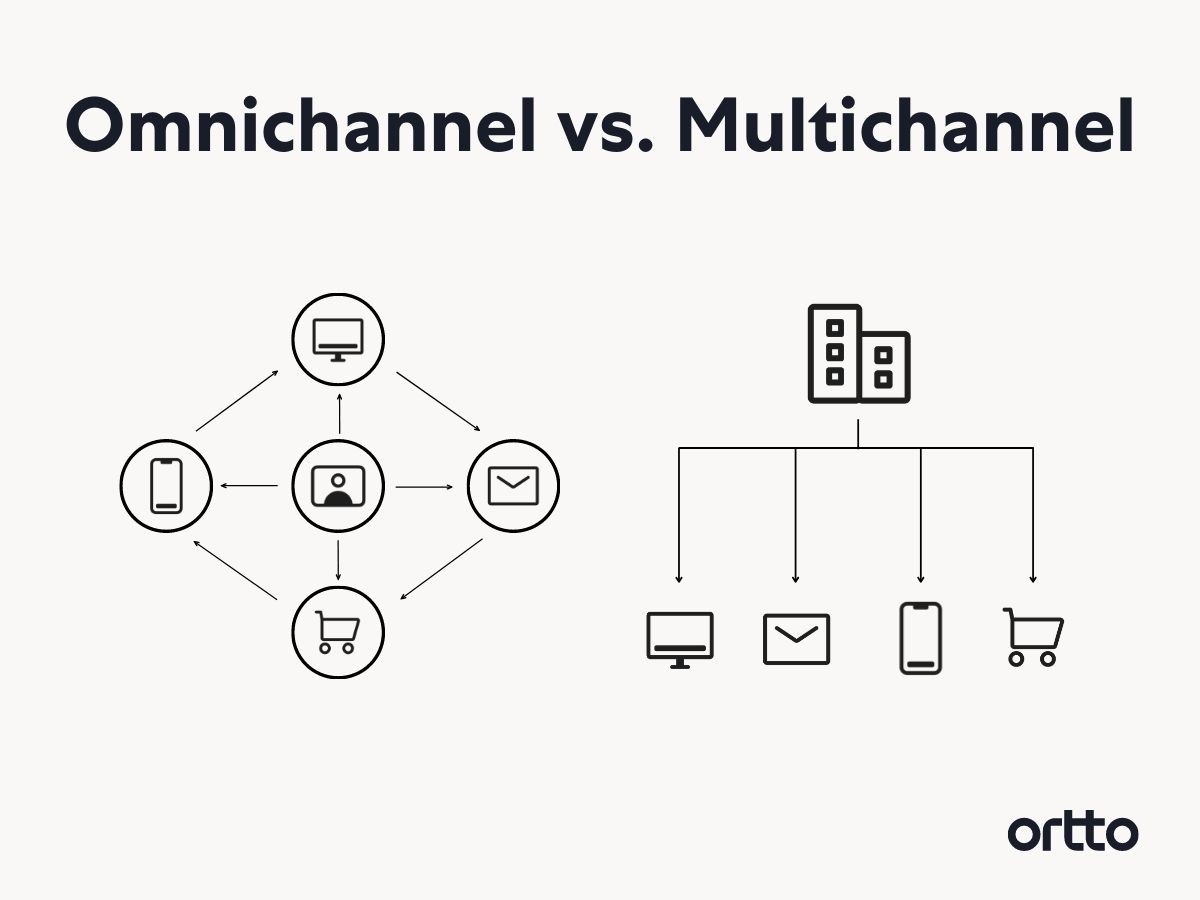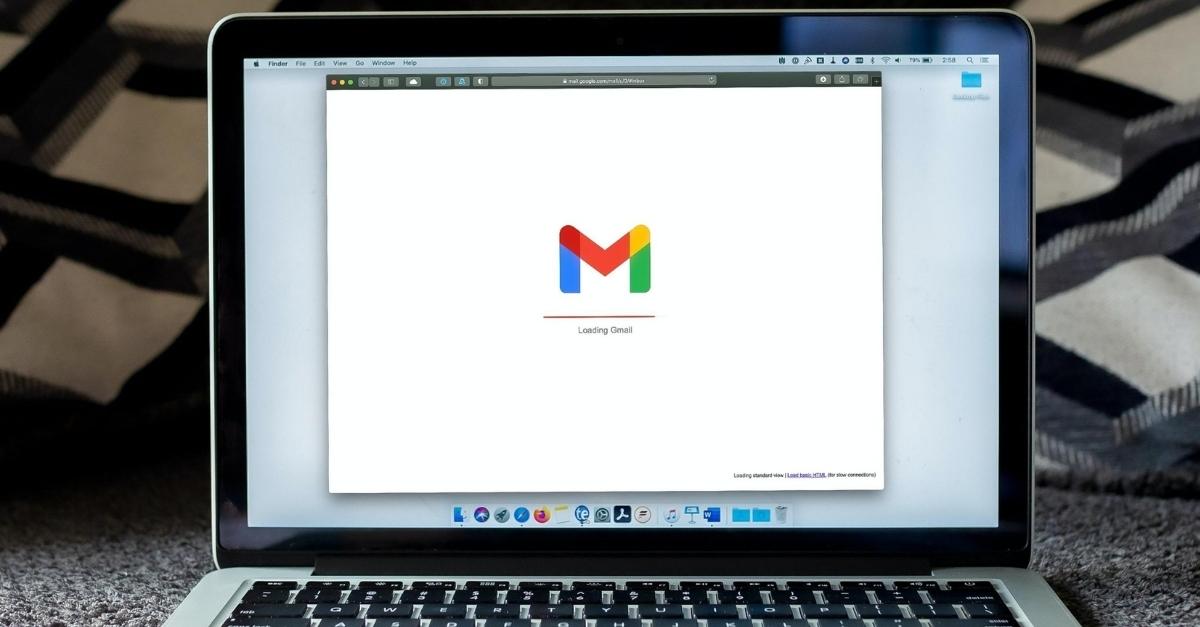There is no silver bullet for driving lead generation, but there is something household names like Starbucks, Target and Sephora have in common – they all leverage omnichannel marketing.
In this guide, we break down what omnichannel marketing is and list 11 omnichannel marketing strategies with examples from leading businesses.
What is omnichannel marketing?
Omnichannel marketing puts the customer at the center of the strategy to create a seamless, high-quality customer experience that occurs within and between channels (e.g. email, SMS, in-app messaging, website, social media, etc.). Omnichannel enables data synchronization and merges all sales and marketing efforts to break down boundaries between channels and create a single experience for the customer.
An omnichannel approach enables consumers to jump between channels and encounter the same experience. This is because each channel automatically updates with the latest interaction a customer has with the brand, ensuring the customer experience is seamless and convenient across all touchpoints.

How does omnichannel differ from multichannel?
Omnichannel and multichannel are used interchangeably, but they have key differences.
While they both refer to the use of multiple channels to communicate with customers and leads, not every multichannel approach is omnichannel. This is because multichannel is channel-centric rather than customer-centric, meaning that the channels are not integrated and the capability is limited to the functionality of a single channel. The lack of integration in a multichannel approach can result in siloed data, fragmented communication, and misaligned messaging.

The benefits of adopting an omnichannel approach
There are plenty of benefits of leveraging an omnichannel marketing approach, including:
Consistency in brand experience: messaging is unified across channels; an interaction with one channel will mirror that of another.
Personalized customer experience: omnichannel enables brands to maximize content personalization across all touchpoints.
Measuring ROI on marketing activities: with an omnichannel approach, a brand can house customer data in a single ‘backend’ (like a customer data platform), making it easier to visualize, analyze, and report on campaign performance.
Delivering a better customer experience: the ability to communicate with brands through multiple channels is convenient for customers, and this strengthens the brand-customer relationship.
Richer customer data: omnichannel enables a brand to merge marketing, finance, support, sales, and product data into a single customer profile to better understand customers’ journey and behavior.
Omnichannel marketing is best practice because it mirrors real-world experiences. As consumers, we think about our experiences with a brand as the sum of all the parts – from our online purchasing experience, to the ads we’re served on social, to the in-store experience we have with a sales person.
Buckle up, because we’ve rounded up the 11 best omnichannel marketing strategies you need to try.
1. Use sequential marketing messaging
Do you know anybody that uses just email to interact with a brand, or just SMS? Probably not. There is no such thing as a mono-channel customer today; customers move between multiple channels to interact with a brand.
As the number of channels a customer uses to make purchases increases, so too should your communication touchpoints. It may seem overwhelming to work across channels, but you should think of it as an opportunity to punctuate your marketing messages in places they will be seen. Plus, it means that if a customer is not responding to your marketing on one channel, you can try another channel.
This is a technique known as sequential marketing (aka sequential advertising or sequential retargeting) which uses a sequence of messages or ads to tell a cohesive and compelling story about your brand.
To do this, use customer data to determine which channel is best for the first touchpoint and which channels are best for subsequent touchpoints. You may A/B test different versions of the message across different channels like SMS, email, etc. to see what works best.
2. Guide your customer to the next stage in the customer journey
Think of each interaction as a chance to teach someone something new about your brand or offering. Done right, this should help to guide customers down the buyer’s journey.
To get started, look at each stage of the customer journey using the following customer journey marketing framework below as a reference. This framework is a blueprint that will help you work out how to acquire, nurture, and grow more customers.

Once you’re familiar with the framework, consider all the marketing channels you have at your disposal – social, display, retargeting, search, email, text, phone, in-app messages, direct mail, video, in-store experiences, and so on.
Next, think about which channels would make the most sense to communicate through based on the journey stage your customer is currently at. Using the framework above, below is a rough outline of what a journey might look like for a SaaS company.
Acquire: Paid search campaigns and on-site messages with a focus on creating initial awareness
Nurture: Retargeting campaigns via Google or Facebook Ads, text messages, and nurture emails with a focus on education and showing value through case studies and testimonials
Grow: Nurture emails, in-app messaging, and in-person events with a focus on activation, enablement, and encouraging usage
Over time, your customers’ knowledge of your offerings will compound and nudge them further along the customer journey.
3. Automatically send omnichannel messages based on user actions
Behavior-based messaging allows you to reach contacts at the right time and offer a personalized experience. The way it works is simple: when a user completes a particular action, they receive something.
Here are some examples:
When someone signs up for a free product trial, they receive an email telling them how they can familiarize themselves with your product
When a lead becomes a paying customer, they receive a welcome SMS and perhaps a personal call a few days later from the sales team
When a user browses a particular product on your website, they are automatically placed in a Google Ads audience segment so they see that product (or similar products) via dynamic retargeting ads
Your customers are more likely to respond to messages if they are directly relevant to their previous interactions and interests. How can you determine if your messages are relevant to them? By putting yourselves in their shoes and asking: “What message on channel makes the most sense in response to this particular event?”
So, if you send a customer an email after they’ve spent some time browsing a particular product on your website, you need to ensure the content is personalized for the product they were looking for, and not a completely unrelated item. Additionally, if the customer clicks a link from your email, the page you send them to should be relevant and encourage continued interaction.
4. Layer all your channels
Omnichannel marketing works best when you layer your channels on top of each other to drive your message home. Consider the following channels and where they meet the contact:
Email → inbox
SMS → phone
Direct mail → physical mailbox
In-app message → within your product
On-website message → on your website, either on the landing page or within a product page
With these five channels alone, you can send a strong, unified message about your brand. Let’s say you’re running an event like a webinar, and you wanted to entice participants to sign up for your product with a special offer. The following journey layers SMS and email channels on top of each other when users express their interest in your offer via SMS.
5. Think long-term rather than short-term
Identifying opportunities for process improvements is a good thing. The problem? All too often, businesses get carried away with concentrating on small details and measuring things too granularly, and they lose sight of the bigger picture. If you think your business isn’t growing, it could be because you’re spending too much time focusing on the little things.
6. Optimize channels for enquiries
Today, many consumers are digital-first, and they have certain expectations when it comes to customer service. Research found that 50% of B2B queries are made on a smartphone, so it is essential that channels are integrated and customer interactions are seamless.
For example, a customer should be able to purchase a product through a business’ website, and then contact support with a query about their order via the in-app messaging function or via social media, without a hitch.
Additionally, PwC surveyed consumers on what they consider to be good customer service, and nearly 80% say that speed, convenience, knowledgeable help, and friendly service are the most important elements. When optimizing channels for enquiries, ensure these things are priority.
7. Focus on winning back inactive customers
Did you know that 65% of a company's business comes from existing customers? Unfortunately, some marketers make the mistake of treating all customers and leads as equal. In other words, they are investing valuable resources in cold leads that aren’t likely to convert.
Instead of spending money acquiring new leads over and over again, focus on winning back inactive leads (i.e. customers who have made a purchase before but have become disengaged).
The reasons you should focus on re-engaging inactive customers are:
Acquiring new customers has a large price tag: think outbound marketing, inbound marketing, sales and business development expenses, and event marketing strategies.
Inactive leads are acquainted with your brand: even though you may have dropped off their radar recently, you don’t have to spend time building brand awareness from the bottom up.
Inactive customers already trust you: inactive customers have already demonstrated a need or desire for your products, so unless they’ve met their needs or had a negative experience, they are still considered warm leads.
You already have existing data on inactive customers: you have information about inactive customers (e.g. their preferences, engagement rates, and what they like) whereas you have no data around prospective customers. This means you can personalize your marketing campaigns to spark re-engagement.
Inactive customers can reveal important insights: leveraging inactive customers’ opinions of your brand is a great way to identify and address issues. Simply survey them about your customer service, product quality, delivery service, etc.
8. Never underestimate the importance of mobile
Your marketing efforts can be second-to-none, but if your mobile user experience is sub-par, your efforts will be wasted. After all, the share of mobile ecommerce sales in total ecommerce sales was a staggering 72.9% in 2021 – and that percentage is projected to increase.
There is huge value in ensuring your mobile website speed is up to scratch. Once those factors are in-check, consider the elements such as design and accessibility as well as thinking about how mobile fits into your broader omnichannel marketing strategy.
9. Integrate online and in-store
Customers expect their experience with a brand online to mirror that of their in-store experience – and they want both experiences to be seamless.
Click-and-collect is an example of online and in-store integration that is very appealing to customers. According to research, the main reasons customers opt for click-and-collect instead of delivery is to avoid shipping fees (73%), because it’s convenient (32.2%), and because it’s quick (30.4%).
10. Optimize the ad experience for your customers
As more businesses get on-board with marketing automation, personalizing your content and creating emotional connections with your audience will be of the utmost importance. Generic marketing messages simply won’t cut it.
The first step to personalization involves getting to know your customer. Users of Ortto’s audience segmentation software can target audiences based on any combination of demographic, firmographic, behavioral, event-based, and transactional data. Additionally, Ortto allows you totarget these audience segments with automated messages based on events like purchase, subscription, or abandoned cart. And, by using dynamic content fields, you can ensure that every message has a personal touch, including the actual items left in cart or the details of that individual’s subscription.
Optimizing the ad experience means you can serve the right customers at the right time, improving customer engagement and retention rates.
11. Ensure your existing customers are happy
Remember to focus on providing a high-value experience for your existing customers. After all, they’re the people most likely to help your business grow over time and drive results in the long run.
A useful ecommerce metric to measure customers’ satisfaction and brand advocacy is Net Promoter Score. This is where you ask customers: “On a scale of one to 10, how likely are you to recommend this brand?” Depending on where the customers rank on the scale, they will either be detractors, passives, or promoters. If you have mostly promoters, that’s positive. You can also turn detractors into promoters by sending them a follow-up email to find out what went wrong, and then make it up to them. With Ortto, this kind of customer journey can be automated.
With an omnichannel approach, some customers could receive this survey and follow up via SMS, where others could receive it over email. And when that same customer has an interaction with a support or sales team member, that team member can see whether the customer is satisfied or unsatisfied, giving full context to their conversation.
Follow the 5-step guide below to kickstart your omnichannel marketing strategy.
Unify your data in a CDP like Ortto
Segment your audience (Ortto enables segmentation using any combination of demographic, firmographic, behavior, event, and transactional data)
Build your customer journeys – send marketing messaging across email, social, on-site / in-app messaging, and more
Personalize messaging – use dynamic content fields to send abandoned cart reminders, birthday greetings, and other personalized messaging
Measure the success of activities by tracking everything in dashboards and continuously optimizing customer journeys
The final word
Omnichannel marketing – and specifically, unifying your customer data to deliver a seamless customer experience across channels – presents a business with more ways to drive lead generation and move leads down the sales funnel. With a customer data platform like Ortto, integrating your data sources is simple, making it easy to create a single customer view, build omnichannel marketing campaigns, and deliver remarkable, personalized experiences across the entire customer journey.
Author

More by Sidney O'Connell
Sidney O'Connell has no more articles


